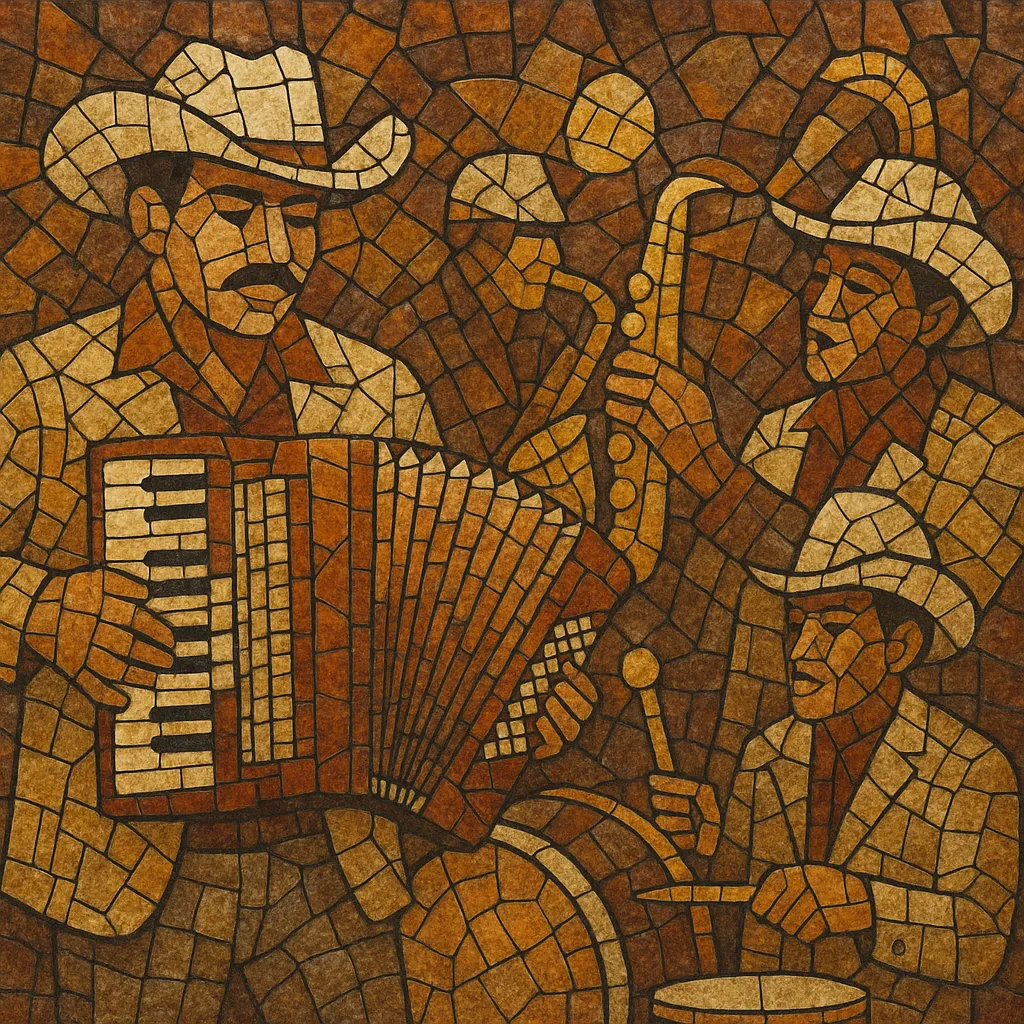
Duranguense is a high-energy substyle of Regional Mexican music that crystallized in Mexican‑American communities, especially around Chicago, in the early 2000s.
It reimagines brass‑driven banda/tamborazo sounds with economical, dance‑floor‑ready instrumentation: synthesizers emulate tuba and brass lines, a drum kit and tarola (snare) drive brisk polka/ranchera rhythms, and saxophones often add hooky countermelodies.
Typical songs feature bright, major‑key harmonies, rapid two‑step grooves, and emotive vocals centered on love, heartbreak, and celebration—made for the popular “pasito duranguense” dance.
The style surged on U.S. Spanish‑language radio and Latin charts mid‑decade, becoming a cultural touchstone for Mexican diaspora youth before receding as banda and norteño‑banda regained dominance in the 2010s.
Duranguense coalesced among Mexican migrants—many with roots in Durango and Zacatecas—living in the greater Chicago area. Bands streamlined traditional tamborazo/banda textures by replacing tuba and much of the brass section with affordable, portable keyboards while keeping the propulsive tarola/snare and bass‑drum feel. Early Chicago groups began cutting independent releases and performing in salons and clubes, incubating a fast, danceable sound.
The genre exploded between roughly 2003 and 2008, fueled by Spanish‑language radio, Mexican nightlife in the Midwest, and label support. Acts such as Grupo Montéz de Durango, K‑Paz de la Sierra, Alacranes Musical, and Los Horóscopos de Durango topped Regional Mexican charts, while the “pasito duranguense” dance spread across the U.S. and northern Mexico. Synth‑tuba bass lines, bright sax riffs, and brisk 2/4 polka/ranchera patterns became instantly recognizable signatures.
As the wave matured, splinter groups (e.g., AK‑7, Los Creadorez del Pasito Duranguense de Alfredo Ramírez) extended the sound, and the repertoire broadened to include cumbia covers and romantic ballads in duranguense arrangements. By the early 2010s, audience taste shifted toward banda sinaloense and norteño‑banda hybrids; the duranguense chart presence faded but remained culturally significant in diaspora communities and regional scenes.
Duranguense demonstrated how regional traditions could be adapted with modern, cost‑effective instrumentation for dance‑centric youth culture. Its mid‑2000s dominance shaped club programming, radio formats, and the broader visibility of Regional Mexican music in the U.S., and its keyboard‑driven approach influenced live setups for budget‑conscious groups.

